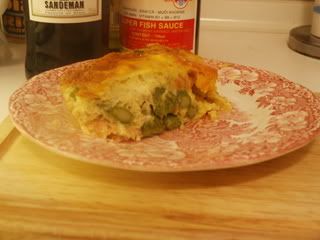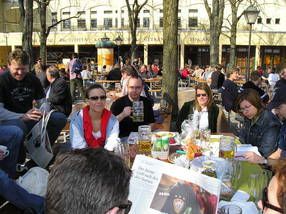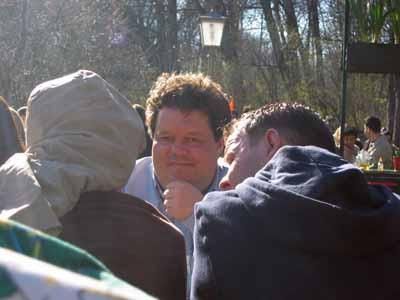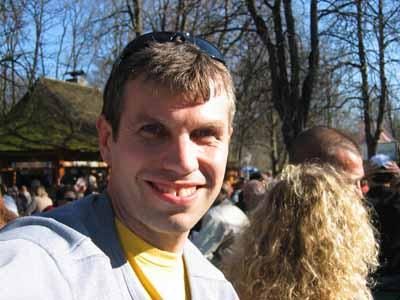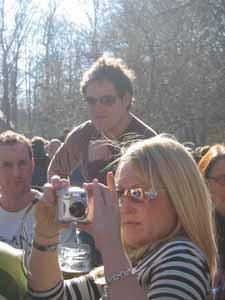We just got back from two eye opening weeks in South Africa, weeks which will take a long time to digest and will remain with me for the rest of my life. Chris had to work in Pretoria for five days of our trip and there’s not a huge lot to do there so I spent much of the time he was in the office lounging by the pool reading like a madwoman and going to the movies. We were staying in a somewhat swanky guest house in the suburbs of Pretoria, run by Akrikaners, the white, mostly Dutch people, who first successfully colonized South Africa in the 17th century and were essentially in charge until the Brits decided that they needed a piece of the action. In any case, the Afrikaner influence is everywhere, particularly in the language. They were warm and friendly towards me and very hospitable, but I found them to be inherently racist, referring constantly to “them” and making wide sweeping comments such as “you know how they are” about anyone of color, which was a problem for me in many ways. Not voicing my opinion felt like collusion, but I decided to be polite and keep my mouth shut, a major feat for me as everyone knows. There’s also a level of condescension towards people of color that bothered me, sort of like a convoluted noblesse oblige which takes the form of “only WE know what’s best for THEM.” It was hard to handle in some cases, and not as evident in the Cape Town area as it was in Pretoria and Johannesburg, where quite a bit of the Akrikaners retreated in the 19th century in wagon trains in what is called “The Great Trek.” after the British abolished slavery in the Cape. At the time, one of the trekkers wrote about the blacks “it’s not so much their freedom that drove us to such great lengths, as their being placed on an equal footing with Christians, contrary to the laws of God and the natural distinction of race.” Chris and I spent a good deal of our time away just shaking our heads.
We took a tour of Soweto, the famous black township outside of Johannesburg, from where both Nelson Mandela and Archbishop Desmond Tutu hail. It was conducted by an Afrikaner, with whom I was at loggerheads almost immediately. He seemed really more interested in making excuses than in telling us the truth about anything. I guess he thought I wasn’t informed. Too bad for him, I was. Soweto is huge in area and its population is estimated to be 4 million people, many of whom are living in shacks made of corrugated metal and other scrounged and found building materials. The roofs are covered with large rocks and cinder blocks to keep them from blowing away. Laundry flaps in the wind, dogs run along the side of the roads and kids play. Many of these people have neither electricity nor running water. There are banks of outhouses everywhere. No one has a phone which has risen to the very entrepreneurial phenomenon of folks using discarded shipping containers as phone centers. These are on every corner. Much of the living is done outdoors. Each neighborhood has several “tuck shops” which are basically niche in someone’s home where they sell necessities like bread, eggs and milk. The thing I liked the most were the outdoor barber shops and hair salons. Folks were getting their hair coiffed in broad daylight and no one was blinking an eye. Everywhere you turn is another street market selling all sorts of stuff, including live animals, which walk freely on the streets. Little fires burn everywhere, as they did in Egypt – a convenient way for township people to get rid of their trash. It’s normal life for them, a fact that is hard to accept for a spoiled American like me. People stuff themselves into mini busses to commute to mostly menial jobs and have a really tough life by our standards, but mostly everyone I came across from the townships was up for a laugh and getting on with it by and certainly not dwelling on their circumstances. We took a tour of the Hector Pieterson Museum, dedicated to the violent Soweto uprisings in 1976 in which black students demonstrated peacefully against the forced learning of Afrikaners in their schools only to be met with a hail of gunfire by the police killing dozens and leading to general revolt allover South Africa in the coming months bringing the problem of apartheid front and center in the world’s eyes. The museum was very moving and left me in tears, but it was important to see it.
Enough of politics for now. South Africa is stunningly beautiful in a way which surprised me completely. From the bush to the lush Cape, it seemed so wild and varied. Our first weekend was spent in a private game reserve. We went on dawn and dusk game drives in a land rover to spot animals. It was wonderful. I think sunrise in the bush has got to rank among my life’s greatest experiences. In fact, one morning, I saw a falling star which was magical. Everything was new to me and therefore very exciting – from the amazing animals in their own environment to the bird songs to the sensuous smell of the bush. Seeing eye to eye with an elephant was frightening but exhilarating. We saw a few huge rhinos as well as masses of zebras, all sorts of varieties of antelopes, hippos, wildebeests, giraffe, crocodiles, snakes, owls, hawks, eagles, rabbits, lizards and jackals among other things. Even the smaller less dramatic animals were beautiful. I loved every single minute of it! It met all of my expectations.
We spent the last week of our trip on the Cape, one of the most spectacularly situated cities I have ever visited. Dubbed the “Mother City”, Cape Town sits under Table Mountain, a huge mountain with a flat long top, and on the Atlantic Ocean, which is surprisingly frigid here. Architecturally, it’s a wonder with much variety from lovely gabled homes in the Dutch colonial style, some with thatched roofs, English and Georgian style buildings, Mosques, and an area called Bo-Kaap, the Muslim Malay quarter with brightly colored homes. It’s a beautiful city, but you are warned not to really walk the streets in certain areas, which seemed safe to me, because of the high crime rate. There’s a beautiful waterfront area which has been developed extremely well. Being from Philadelphia, where no matter how hard we try, we just cannot seem to get our waterfront done right, I was very impressed with just how functional and fun this area was. Loaded with shops and restaurants and people, it was buzzing with activity. One evening, we sat on a dock drinking beer and eating fish under the protection of Table Mountain and looking out to sea with the most perfect full moon hanging low in the sky. For me, it was one of those perfect moments to file away and bring out later when I am having a stressful day.
We took the obligatory cable car ride up Table Mountain, which made me think of my friend Tom Baglivo, and an ascent we’d made to the top of Anacapri in Italy in ski lift chairs, laughing the whole time. The view from Table Mountain to the sea is nothing short of dramatic and extraordinary, with a range of peaks adjacent called The Twelve Apostles, and the sea crashing onto white beaches in one direction, with all of Cape Town below. As usual, I was pronouncing it “the most beautiful place” I have ever visited, but Chris had to remind me that I have said that about at least four other places this past year. To which I replied, as usual, “I know, but this really is the most the beautiful.”
We also took a trip to the Cape of Good Hope, which is set in a nature reserve again with a really amazing array of animal and bird life including some really funny baboons. We were told a story about a baboon swiping a New York tourist’s Chanel bag and not giving it up and weeks later seen with it slung over his shoulder, insouciantly, like any other shopper on Park Avenue!
We also went to a great penguin colony, which was absolutely delightful. Thousands of them were waddling and nesting on a beach. When you’re from New Jersey and the wildest thing you see are chipmunks, something like these creatures are absolutely joyful!
We spent an entire morning touring Robben Island, the prison off Cape Town, where Nelson Mandela and thousands of other political prisoners were held for years. Our tour was conducted by a former political prisoner and it was one of the highlights of the trip. Mandela’s standing is as high as it has ever been and paying homage to him by making a pilgrimage here seemed necessary to both of us. Our guide was wonderful, not bitter in any way, stressing the need for reconciliation and forgiveness in South Africa. There was a palpable serenity about him that I’ve not felt many times in my life. I really feel lucky to have been in his presence. Robben Island is full of wildlife including penguins, ortriches, antelopes and seals all living unfettered, which is in marked contrast to the tiny solitary cell where Mandela lived for over twenty years. I have always thought of Mandela as a real hero for our times, but when you see how he lived for so long, you’re even more touched by his seemingly indomitable spirit.
We also did the Winelands outside of Cape Town, which made for a fun afternoon. We did some tasting and liked the Pinotage, which is unique to South Africa, the most. There are hundreds of estates along the wine routes, many of which offer tastings. It’s a lovely area, full of small vineyards, surrounded by dramatic mountains and smaller hills. It was a really memorable afternoon.
Our last few days were spent on the Garden Route, in the Western Cape. We stayed in a beautiful lodge overlooking the Indian Ocean and spent most of our time there going from one deserted pristine beach to the next. It’s an amazing landscape with forested mountains going straight down to sea, with small waterways and lagoons dotted throughout. We spent Easter Sunday at a restaurant overlooking the beach eating oysters and mussels and drinking ice cold white wine, just a bit different from eating rare leg of lamb at my mother’s house!
Speaking of food, the meat, seafood and fish in South Africa were among the tastiest I have ever had. Living in Germany, where the beef is substandard, I was licking my chops each night at the sight of a bloody piece of meat being delivered to me. The South Africans claim that they do not take responsibility for any well done meat, an attitude I like! I even got Chris to eat a rather sanguine piece as well and he wasn’t complaining. I have been trying like mad to break him of his British well done habit because in my family it simply will not do, so think I may have a success on my hands! We had all sorts of good fish which I had never tried before which was delicious, as well as antelope carpaccio (yes, the same cute antelope I had been marveling over in the game reserve were now small raw pieces of delectable meat on my plate.) and ostrich filets, which were fantastic. All this washed down with great wine and chatter about our day’s adventures was really nice.
I really feel privileged to have been to South Africa, a place with tons of problems, but also a boundless heart and capacity for reconciliation and moving forward. It’s a place I will want to return someday – when hopefully, some progress has been made in the area of lessening the gap between the haves and have nots.




